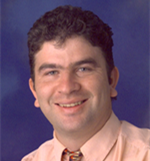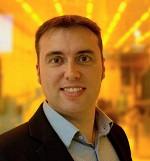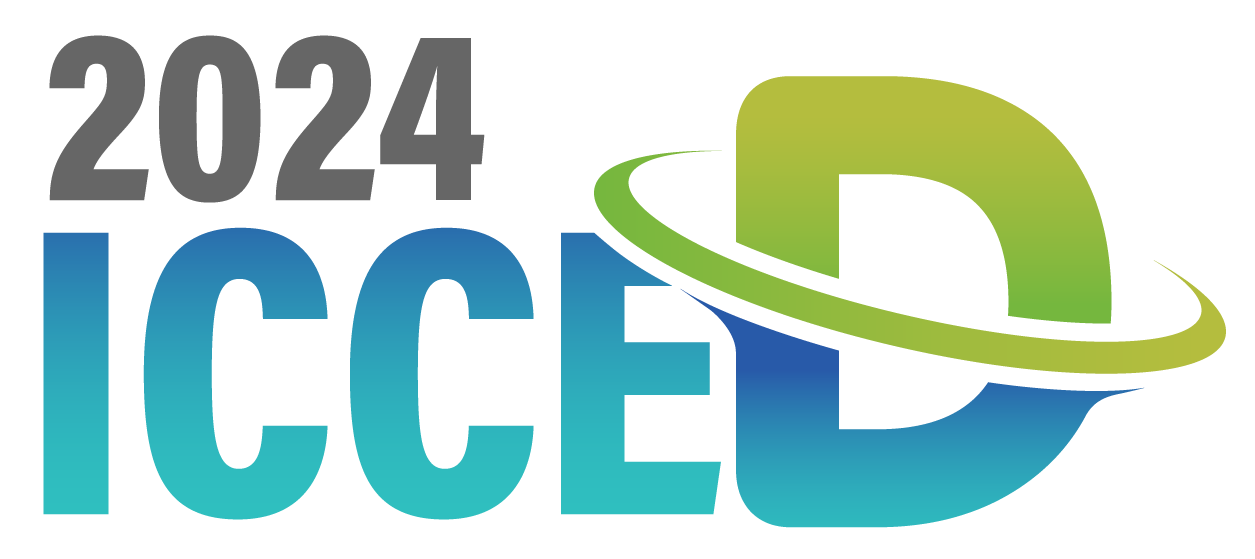Full Paper or Abstract Submission Due:
February 25, 2024
Notification of Draft Paper Acceptance:
March 15, 2024
Registration Deadline:
March 30, 2024
 Prof. Amine Bermak, IEEE Fellow, Hamad Bin Khalifa University, Qatar
Prof. Amine Bermak, IEEE Fellow, Hamad Bin Khalifa University, Qatar
Biography: Prof. Amine Bermak received the Masters and PhD degrees, both in electrical and electronic engineering (microelectronics and Microsystems), from Paul Sabatier University, Toulouse, France in 1994 and 1998, respectively. During his PhD, he was part of the Microsystems and Microstructures Research Group at the French National Research Centre LAAS-CNRS, where he developed a 3D VLSI chip for artificial neural network classification and detection applications in a project funded by Motorola. While finalizing his PhD, he was offered a Post-doc position at the Advanced Computer Architecture group at York University – England, to work on VLSI implementation of CMM neural network for vision applications in a project funded by British Aerospace.
Prof. Bermak was nominated for the 2013 Hong Kong UGC best teacher award (for all HK Universities). He is the recipient of the 2011 University Michael G. Gale Medal for distinguished teaching (Highest University-wide Teaching Award). This gold medal is established to recognize excellence in teaching and only one recipient/year (out-of over 550 faculty) is honored for his/her contribution. Prof. Bermak is also a two-time recipient of the “Engineering School Teaching Excellence Award" in HKUST for 2004 and 2009, respectively.
Prof. Bermak has received many distinguished awards, including the 2016 DAC best design context award, the “Best paper award” at IEEE International Symposium on Circuits and systems ISCAS 2010; the 2004 “IEEE Chester Sall Award”; the IEEE Service Award from IEEE Computer Society and the “Best Paper Award” at the 2005 International Workshop on System-On-Chip for Real-Time Applications. He has published over 250 articles in journals, book chapters and conference proceedings and designed over 50 chips. He has supervised 25 PhD and 16 MPhil students. He has served on the editorial board of IEEE Transactions on Very Large Scale Integration (VLSI) Systems and IEEE Transactions on Circuits and Systems II. He is also currently serving on the editorial board of IEEE Transactions on Biomedical Circuits and Systems; IEEE Transactions on Electron Devices and Nature Scientific Reports. He is the guest editor of the November 2010 special issue in IEEE Transactions on Biomedical Circuits and Systems. Prof. Bermak is a Fellow of IEEE and IEEE distinguished Lecturer. He was the co-director of MIT-HKUST Consortium.
Speech Title: Extreme Edge Intelligence: Moving Artificial Intelligence Closer to Sensors
Edge intelligence holds immense importance in enabling real-time decision-making and reducing latency by processing data closer to sensing. This approach enhances efficiency, privacy, and security by minimizing the need for constant data transmission to centralized servers. However, the tradeoffs lie in the limited computational power and memory at the edge, potentially restricting the complexity of algorithms and the scale of data processed compared to the vast resources available in the cloud.
This talk presents the fusion of AI with sensors showcasing the integration of AI at an embryonic stage with sensors, leading to a profound impact on sensor functionality and application. The talk will illustrate this transformative integration of AI at the sensor level using three compelling case studies and illustrating the advantages of edge intelligence:
The first case study, within the realm of olfaction, the convergence of bio-inspired classification algorithms with gas/smell sensors presents a breakthrough in realizing an electronic nose. The seamless embedding of AI augments sensor capabilities, enabling training, recognition and classification of diverse odors, mirroring the sophistication of human olfactory system.
The second case study delves into the domain of vision sensors, illustrating how minor modification of pixel structure can accommodate convolutional layers for deep learning. This adaptation amplifies the capacity of vision sensors, empowering them to interpret and process visual data with the sophistication characteristic of deep learning models, enabling efficient integration of deep learning at the sensor level.
Last but not least, the integration of AI with wearable sensors in order to classify signals derived from wearable devices, enabling the discrimination of various gestures, biomechanics, and vital signs of individuals. By embedding AI within these sensors, a new paradigm in healthcare monitoring and patient care unfolds, revolutionizing the real-time analysis and interpretation of physiological data.
In a nutshell, this talk unravels the paradigm shift where AI converges with sensors at the edge, augmenting their capabilities and reshaping possibilities across olfaction, vision, and wearable sensor domains. The talk not only unveils technical advancements in the area but also underscores the transformative potential of extreme edge intelligence in diverse fields.
 Prof. Dr. Saad Mekhilef, IEEE Fellow, IET Fellow
University of Malaya, 50603 Kuala Lumpur, Malaysia
Prof. Dr. Saad Mekhilef, IEEE Fellow, IET Fellow
University of Malaya, 50603 Kuala Lumpur, Malaysia
Biography: Prof. Dr. Saad Mekhilef is an IEEE and IET Fellow. He is a Distinguished Professor at the School of Science, Computing and Engineering Technologies, Swinburne University of Technology, Melbourne, Australia, an Honorary Professor at the Department of Electrical Engineering, University of Malaya, and a distinguished visiting professor at the Institute of Sustainable Energy, Universiti Tenaga Nasional, Malaysia. He authored and co-authored more than 700 publications in academic journals and proceedings and five books with more than 42,000 citations, and more than 70 Ph.D. students graduated under his supervision. He serves as an editorial board member for many top journals, such as IEEE Transactions on Power Electronics, IEEE Open Journal of Industrial Electronics, IET Renewable Power Generation, Journal of Power Electronics, and International Journal of Circuit Theory and Applications.
Prof. Mekhilef has been listed by Thomson Reuters (Clarivate Analytics) as one of the world's Highly Cited (World's Top 1%) engineering researchers. He is also listed in the world's top 2 % of scientists by "Stanford University", USA he is actively involved in industrial consultancy for major corporations in the Power Electronics and Renewable Energy projects. His research interests include Power Conversion Techniques, Control of Power Converters, Maximum Power Point Tracking (MPPT), Renewable Energy, and Energy Efficiency.
Speech Title: The Role of Power Electronics in Achieving a Modern Carbon-Neutral Society
The global energy system is transitioning significantly to become carbon neutral. The energy generation will be renewables, and electricity will carry more energy. Power electronics (PE) is an application-oriented and interdisciplinary area. It uses power semiconductor devices to perform switching actions to achieve the desired conversion strategy. The PE plays a crucial role in converting and controlling electrical power. The effective use of electrical energy is a vital technique for achieving energy efficiency, and power electronics technologies that can convert electric power into the optimum characteristics for each application are an essential part of this approach. Power electronics systems have attracted attention as critical components for building a sustainable energy supply. PE-based power converters are also widely used in conventional and renewable energy systems. The presentation will discuss the power electronics technology, where it is applied, and the main future challenges for the technology in creating a carbon-neutral society that is believed to be dominantly electrical-based.
 Prof. Mario Lanza, IEEE Fellow,
King Abdullah University of Science and Technology (KAUST), Saudi Arabia
Prof. Mario Lanza, IEEE Fellow,
King Abdullah University of Science and Technology (KAUST), Saudi Arabia
Biography: Mario Lanza got the PhD in Electronic Engineering (with honors) in 2010 at the Autonomous University of Barcelona. In 2010-2011 he was NSFC postdoctoral fellow at Peking University, and in 2012-2013 he was Marie Curie postdoctoral fellow at Stanford University. In October 2013 he joined Soochow University as Associate Professor, and in March 2017 he was promoted to Full Professor. Since October 2020 he is an Associate Professor of Materials Science and Engineering at the King Abdullah University of Science and Technology (KAUST, in Saudi Arabia), where he leads a group formed by 10 PhD students and postdocs. His research focuses on how to improve electronic devices and circuits using 2D materials, with special emphasis on resistive switching applications. Prof. Lanza has published over 185 research articles, including 1 Nature, 2 Science, 6 Nature Electronics and multiple IEDM proceedings (among others), and has registered four patents – one of them granted with 1 million USD. Prof. Lanza has received multiple top distinctions, like the IEEE Fellow, Young 1000 Talent, Marie Curie (among others), and he is a Distinguished Lecturer from the IEEE – Electron Devices Society. Prof. Lanza is the Editor-in-Chief of the journal Microelectronic Engineering (Elsevier), and he serves in the board of many other journals and international conferences, including IEEE-IEDM and IEEE-IRPS.
Speech Title: Hybrid 2D/CMOS Microchips for Memristive Applications
Two-dimensional (2D) materials have outstanding physical, chemical and thermal properties that make them attractive for the fabrication of solid-state micro/nano-electronic devices and circuits. However, synthesizing high-quality 2D materials at the wafer scale is difficult, and integrating them in silicon microchips brings associated multiple challenges. Nevertheless, in the past few years substantial progress has been achieved and leading companies like TSMC, Intel and Samsung have started to work in this direction too. In this talk I will discuss how to integrate 2D materials in micro/nano-electronic devices, circuits, and microchips, giving a general overview of the global progress achieved in the field and presenting our last developments in hybrid 2D/CMOS applications. I will put special emphasis on devices and circuits for memristive technologies, including data storage, computation, encryption, and communication. I will also discuss the main technological challenges to face in the next years and provide some recommendations on how to solve them.


